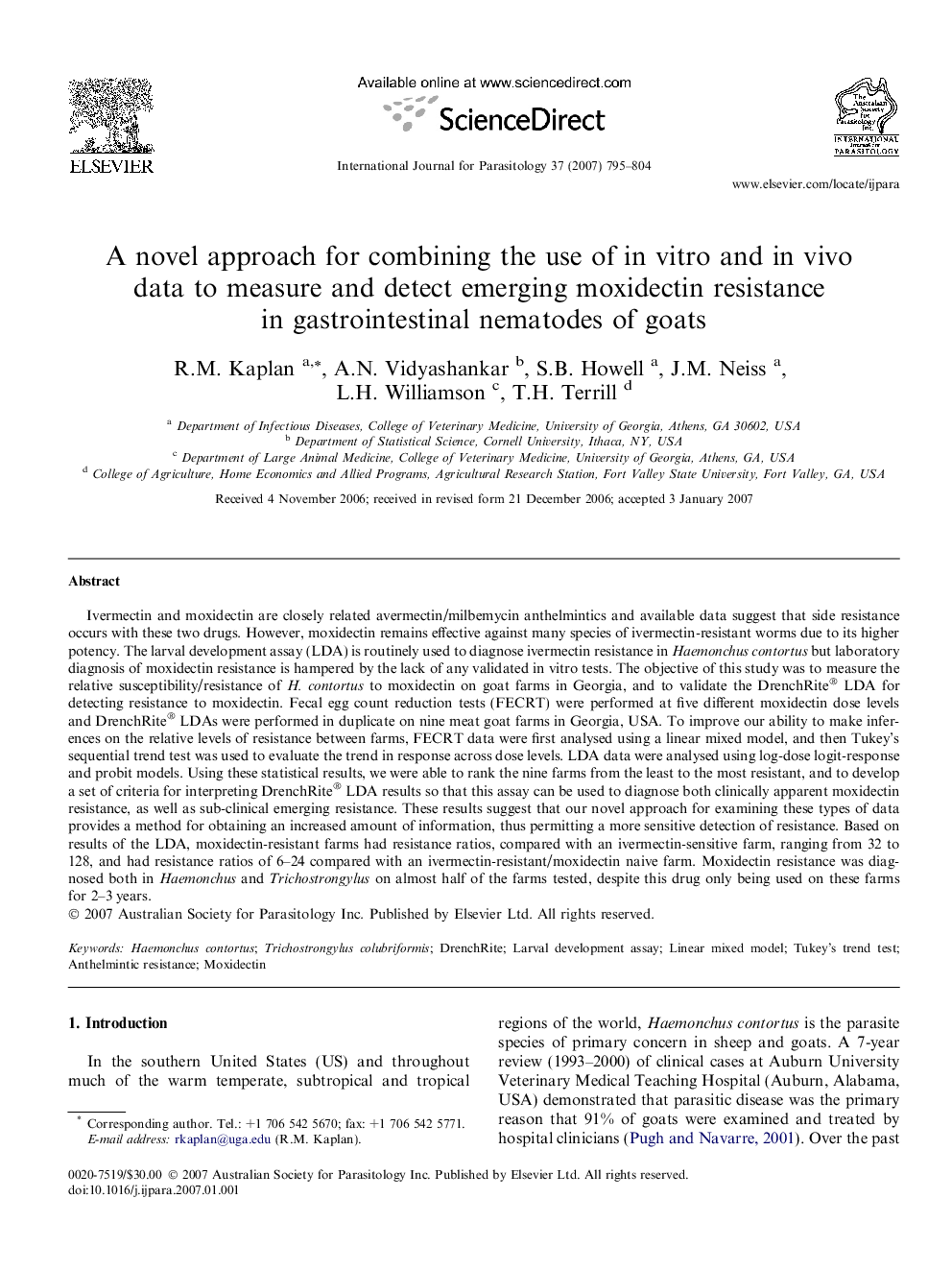| Article ID | Journal | Published Year | Pages | File Type |
|---|---|---|---|---|
| 2436776 | International Journal for Parasitology | 2007 | 10 Pages |
Ivermectin and moxidectin are closely related avermectin/milbemycin anthelmintics and available data suggest that side resistance occurs with these two drugs. However, moxidectin remains effective against many species of ivermectin-resistant worms due to its higher potency. The larval development assay (LDA) is routinely used to diagnose ivermectin resistance in Haemonchus contortus but laboratory diagnosis of moxidectin resistance is hampered by the lack of any validated in vitro tests. The objective of this study was to measure the relative susceptibility/resistance of H. contortus to moxidectin on goat farms in Georgia, and to validate the DrenchRite® LDA for detecting resistance to moxidectin. Fecal egg count reduction tests (FECRT) were performed at five different moxidectin dose levels and DrenchRite® LDAs were performed in duplicate on nine meat goat farms in Georgia, USA. To improve our ability to make inferences on the relative levels of resistance between farms, FECRT data were first analysed using a linear mixed model, and then Tukey’s sequential trend test was used to evaluate the trend in response across dose levels. LDA data were analysed using log-dose logit-response and probit models. Using these statistical results, we were able to rank the nine farms from the least to the most resistant, and to develop a set of criteria for interpreting DrenchRite® LDA results so that this assay can be used to diagnose both clinically apparent moxidectin resistance, as well as sub-clinical emerging resistance. These results suggest that our novel approach for examining these types of data provides a method for obtaining an increased amount of information, thus permitting a more sensitive detection of resistance. Based on results of the LDA, moxidectin-resistant farms had resistance ratios, compared with an ivermectin-sensitive farm, ranging from 32 to 128, and had resistance ratios of 6–24 compared with an ivermectin-resistant/moxidectin naive farm. Moxidectin resistance was diagnosed both in Haemonchus and Trichostrongylus on almost half of the farms tested, despite this drug only being used on these farms for 2–3 years.
